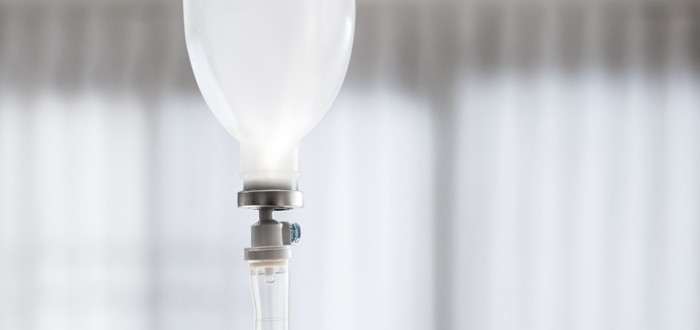There’s a chance you — like many mesothelioma patients — are fighting this cancer with the equivalent of an arm tied behind your back, say researchers.
The thing that’s hamstringing you is inadequate use of chemotherapy, they claim in a study published this month.
The researchers — from Sydney, Australia — believe that as many as 65 percent of mesothelioma patients could benefit from chemotherapy administered at least once during their bout with this killer disease.
However, the researchers found that as few as 18 percent of mesothelioma patients ever actually undergo chemotherapy, depending on the country in which these patients are located.
The researchers said this underutilization was surprising in light of extensive evidence that chemotherapy increases mesothelioma survival and improves quality of life.
Chemotherapy is a treatment that entails intravenous delivery of anti-mesothelioma drugs — typically a cocktail of cisplatin and pemetrexed.
It’s usually offered with the intent to decimate the mesothelioma tumors growing inside you, but chemotherapy is also administered for relief of mesothelioma symptoms.
Mesothelioma Treatment Question
Writing in the Nov. 10 online edition of Asia-Pacific Journal of Clinical Oncology, the researchers contend that chemotherapy is underutilized for a variety of reasons.
Among the most prominent of these reasons is that many patients find the treatment difficult to tolerate. Therefore, some doctors feel it’s better to skip chemotherapy and spare their patients the misery.
The researchers arrived at their findings by starting with a simple question.
They asked themselves what proportion of malignant pleural mesothelioma patients should receive chemotherapy, based on the best available evidence?
The answer came following the construction of an optimal chemotherapy utilization model for malignant pleural mesothelioma.
They built this model with the aid of long-established guidelines designed to identify for whom and under what circumstances chemotherapy was indicated.
“Epidemiological data on the proportion of patients and their tumor-related attributes were combined with the chemotherapy indications to estimate the optimal chemotherapy utilization rate,” they wrote.
The researchers’ analysis was supported by use of decision-analysis software.
“Sensitivity analyses were performed to assess the impact of major variations in the epidemiological data on the optimal chemotherapy utilization rate,” they added.
Mesothelioma Chemotherapy Utilization Rates
Once the researchers had determined the optimal mesothelioma chemotherapy utilization rate — 65 percent — they compared it to actual rate of utilization, country by country.
It turns out that Canada at 61 percent came closest to the optimal utilization rate during the years examined, 2003-05.
The researchers’ home country of Australia had a somewhat lower mesothelioma chemotherapy utilization rate — 54 percent during the years 2007-09.
With a mesothelioma chemotherapy utilization rate of just 36 percent between 2005 and 2006, the Netherlands ranked low on the international scale.
The researchers entitled their study “Estimation of an optimal chemotherapy utilization rate for malignant pleural mesothelioma: An evidence-based benchmark for cancer care.”
Leading the research team was Steven Chuan-Hao Kao, M.D., of Sydney’s Asbestos Diseases Research Institute.
Participating were investigators from Royal North Shore Hospital, Concord Cancer Centre, and Liverpool Hospital, all also in Sydney.

